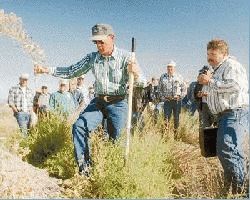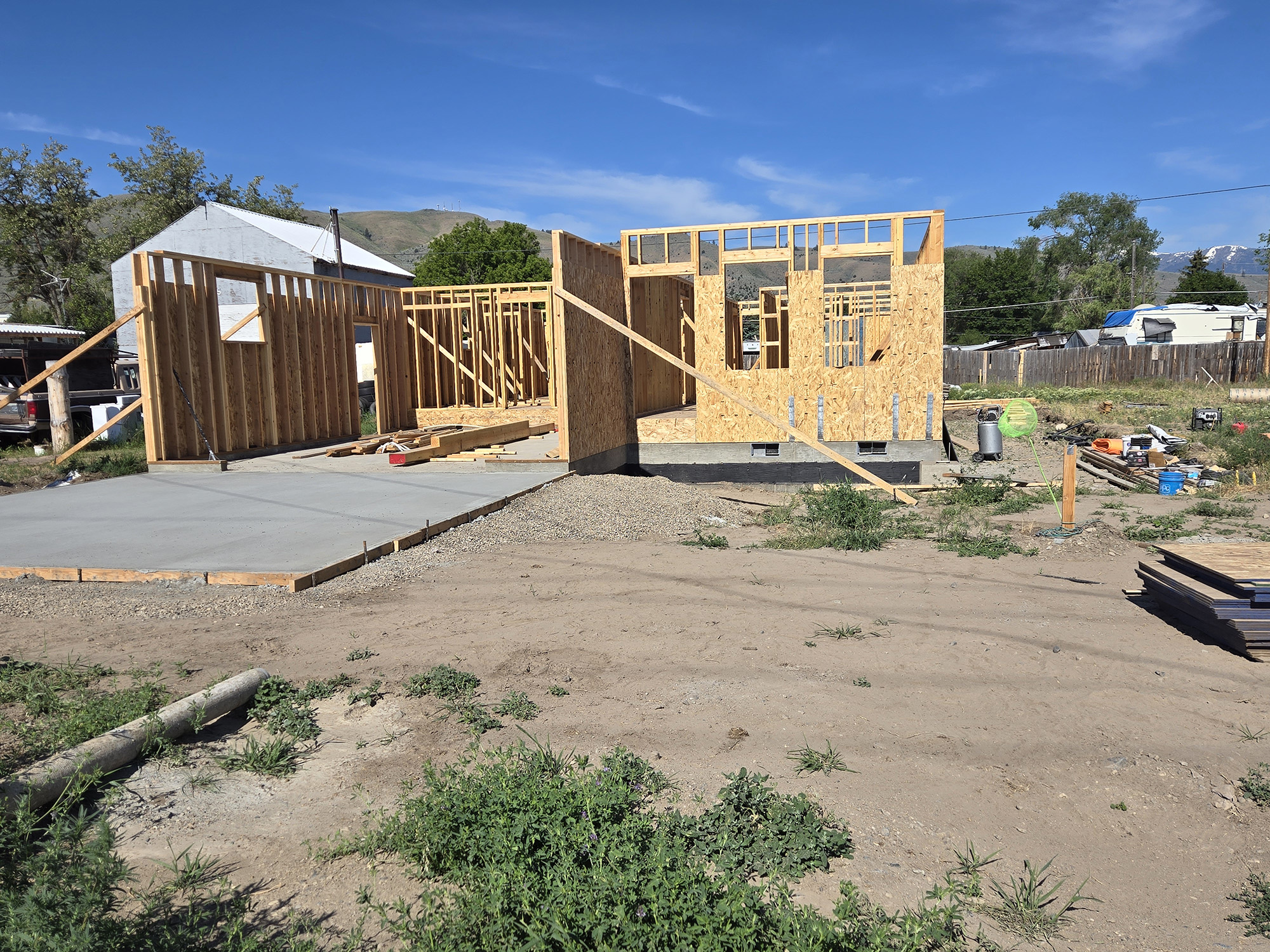Where the wild weeds grow
Published 12:00 am Monday, September 10, 2001

- Don Foster assists Baker County weed supervisor Arnie Grammon, right, by digging up perennial pepperweed east of Haines. Grammon said fighting the weed is like raising teenagers: You have to choose your battles. (Baker City Herald photograph by S. John Collins).
By MIKE FERGUSON
Trending
Of the Baker City Herald
HAINES Baker County weed supervisor Arnie Grammon was determined to underscore the potential of the worst noxious weeds in the county so determined that he took two separate opportunities during Thursdays Fall Conservation Tour to tell people about it.
Some weeds I consider bumps in the road, but others scare me to death, he said during his morning session on perennial pepperweed. Its like raising teenagers: you have to choose your battles. The weed battle in Baker County is no different.
Trending
Perennial pepperweed is often called tall whitetop, but its far more dangerous than that Baker County scourge, Grammon said.
Its more like whitetop on steroids, he said. Its invasive, and it displaces native vegetation. And you cant even graze it in the fall. The cattle will spit it right out, because it has a nasty taste.
It has incredibly deep roots, and it invades critical areas like wetlands, where it turns into a monoculture by producing lots of seeds and crowding everything else out. Its everywhere over Montana and Idaho, and its well adapted to Baker County. If you think whitetop is a problem, perennial pepperweed is twice as bad.
Perennial pepperweed, or Lepidium latifolium, is a member of the mustard family. It grows up to six feet tall and has tiny white flowers in tight clusters. No biological control agents are available, but herbicides have proven effective so long as theyre sprayed at the proper time.
Curiously, Grammon said, the time to spray perennial pepperweed may be fall, rather than spring. Spring spraying may knock the tops down, but the weeds roots are so thick that the plants sprouting capability is unaffected.
During the fall, the weed is translocating bringing carbohydrates from above the ground down to the root. Fall spraying takes advantage of translocation by delivering herbicide to the root, killing the weed.
There are no vast quantities of perennial pepperweed in Baker County, Grammon said. Landowners are doing a real credible job dealing with this weed. We all have weeds in our pasture, and were going to get through this together.
Russian knapweed
It is the spread of Russian knapweed, Acroptilon repens, that has vaulted that weed onto Grammons top five list.
From 4 1/2 miles south of North Powder down to the Interpretive Center, its pretty thick in places, the countys weed specialist said. Youll find it right in the middle of alfalfa and wheat, so it kind of breaks all the rules.
With this one, were restricted with the chemicals we use when we include potatoes in our rotation. In Baker County, potatoes are money producers, and we want to keep them as part of our rotational crop.
Whats needed to knock this weed out, he said, is a combination of vegetation management and the biological control agent (a fancy name for a bug) called the stem/leaf gall nematode.
The rest of the worst weeds
Grammon said he would round out his top five list of Baker Countys worst weeds with leafy spurge (stay vigilant on that one, he advised), Mediterranean sage (in Lake County, its rampant) and spotted knapweed (in Idaho, its practically the state flower).
The time to nip our noxious weed problem is now, he said. Right now its a $10 problem, but it could be a $10,000 problem. The weed problem belongs to all of us, if we want agriculture to continue in this county.








